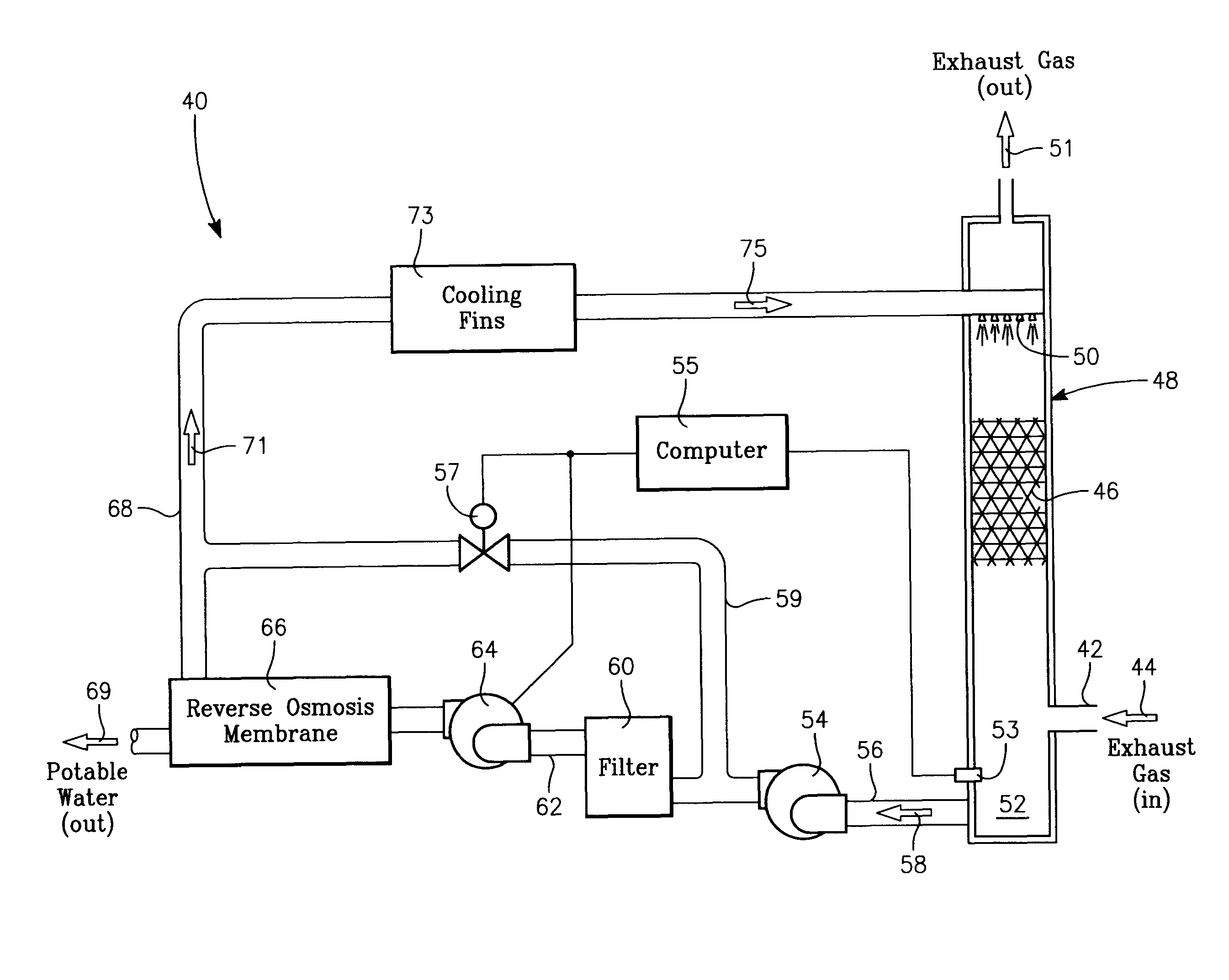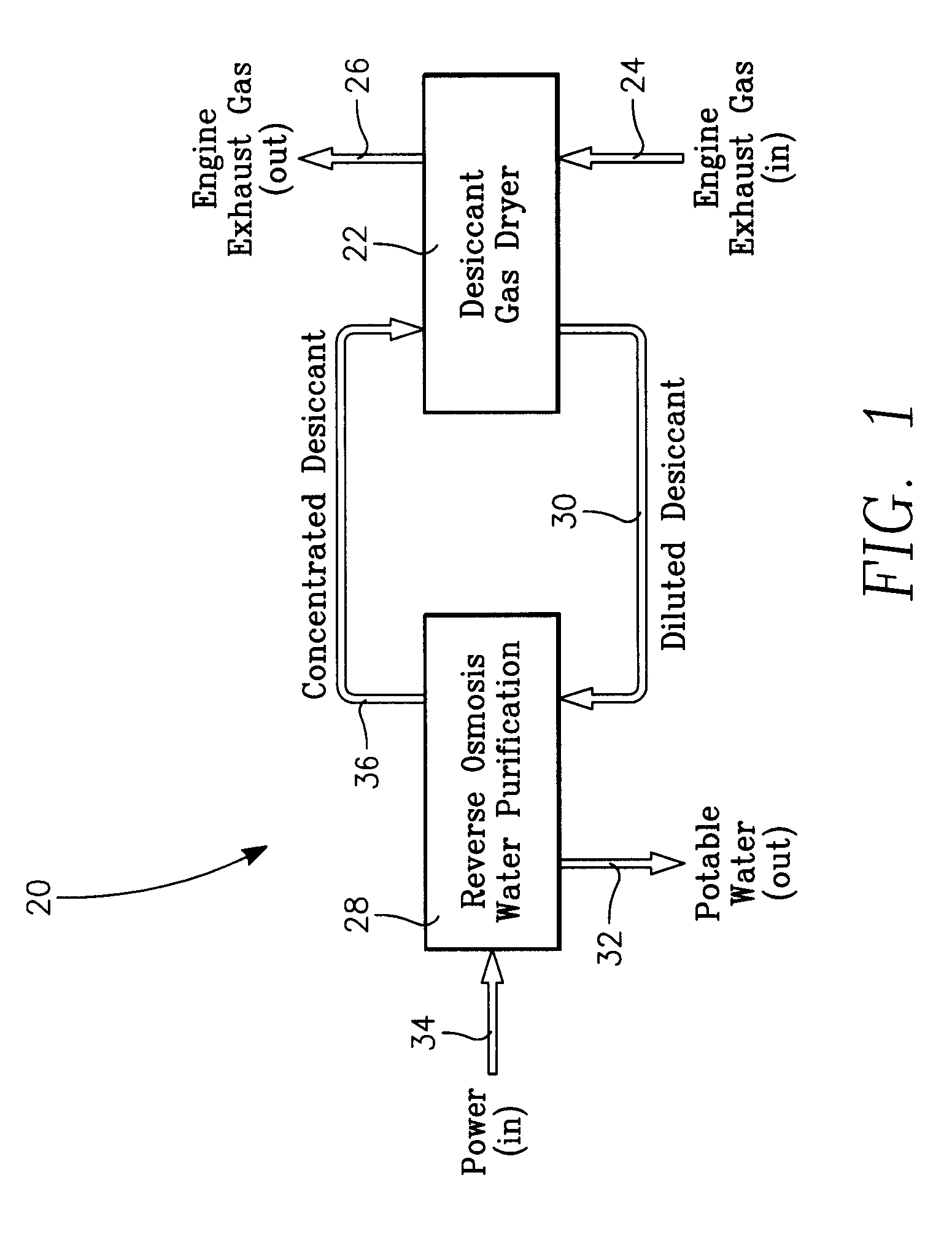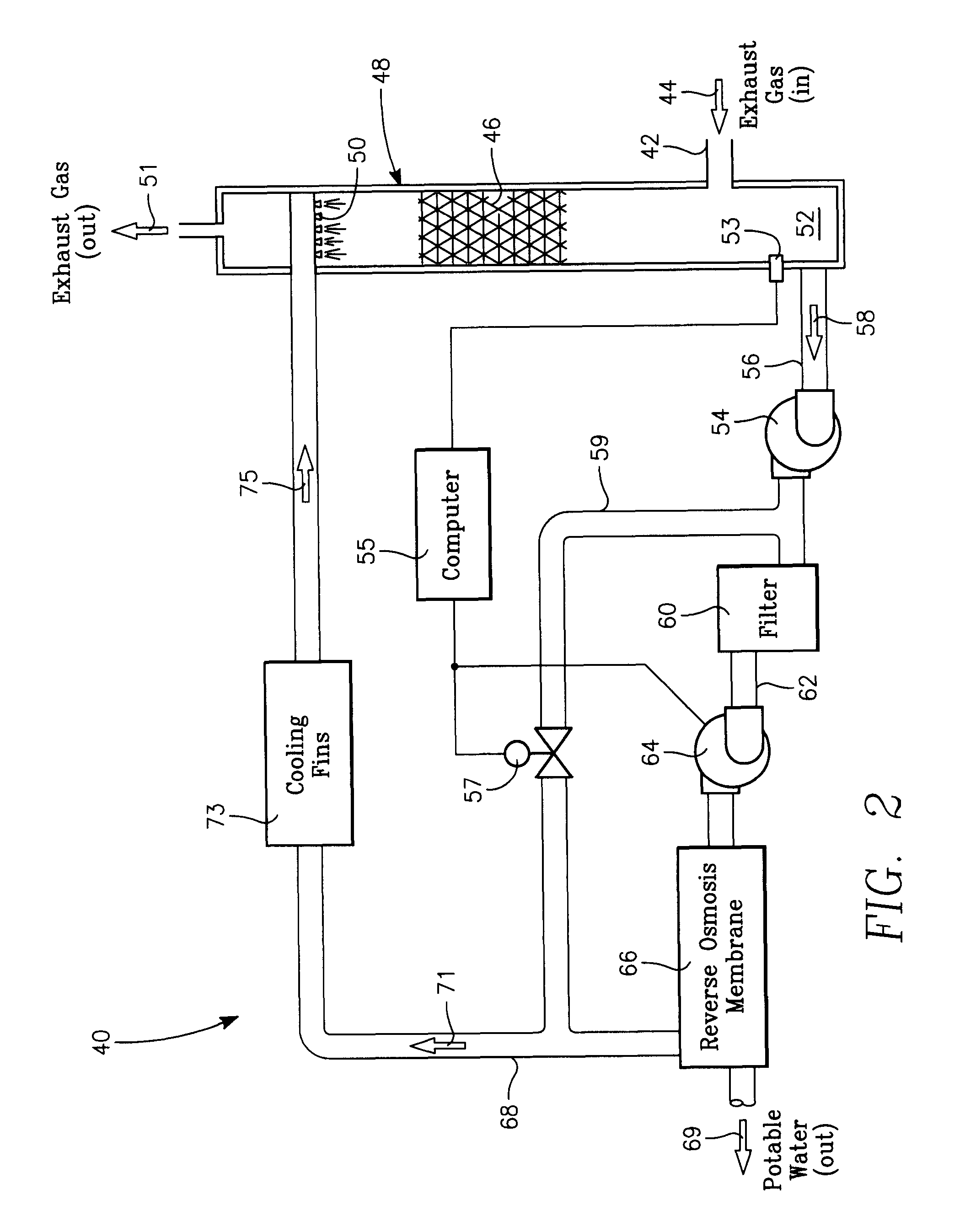Method for recovering potable water from the exhaust of an internal combustion engine
a technology of internal combustion engine and potable water, which is applied in the direction of water/sewage treatment by ion exchange, settling tank feed/discharge, drying machines, etc., can solve the problems of continuous consumption of water by military personnel, difficult logistical problems, and inability to make water lighter or less bulky, etc., to achieve high efficiency and effective water recovery method and apparatus, and simple design
- Summary
- Abstract
- Description
- Claims
- Application Information
AI Technical Summary
Benefits of technology
Problems solved by technology
Method used
Image
Examples
Embodiment Construction
[0018]Referring to FIG. 1, there is shown a simplified block diagram of a water recovery apparatus, designated generally by the reference numeral 20, which uses a desiccant to recover water from the exhaust of military vehicle such as a HMMWV or truck.
[0019]Exhaust from the internal combustion engine enters a desiccant gas dryer 22 as is best indicated by gas flow path 24 Engine exhaust is emitted from gas dryer 22 into the atmosphere in the manner indicted by gas flow path 26.
[0020]The gas dryer 22 includes a liquid-gas contactor 46 (FIG. 2) or similar device which is used to facilitate the transfer of water vapor from the vehicle's exhaust to a liquid desiccant. The diluted desiccant flows from the gas dryer 22 to a reverse osmosis water purification device 28 in the manner indicted by exhaust flow path 30. The reverses osmosis water purification device 28 separates the liquid desiccant into potable water and concentrated desiccant. Potable water exits from reverse osmosis water p...
PUM
| Property | Measurement | Unit |
|---|---|---|
| weight | aaaaa | aaaaa |
| temperature | aaaaa | aaaaa |
| osmosis pressure | aaaaa | aaaaa |
Abstract
Description
Claims
Application Information
 Login to View More
Login to View More - R&D
- Intellectual Property
- Life Sciences
- Materials
- Tech Scout
- Unparalleled Data Quality
- Higher Quality Content
- 60% Fewer Hallucinations
Browse by: Latest US Patents, China's latest patents, Technical Efficacy Thesaurus, Application Domain, Technology Topic, Popular Technical Reports.
© 2025 PatSnap. All rights reserved.Legal|Privacy policy|Modern Slavery Act Transparency Statement|Sitemap|About US| Contact US: help@patsnap.com



